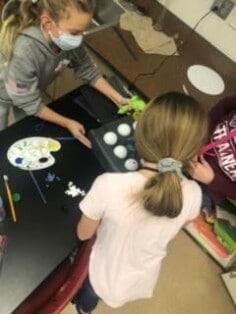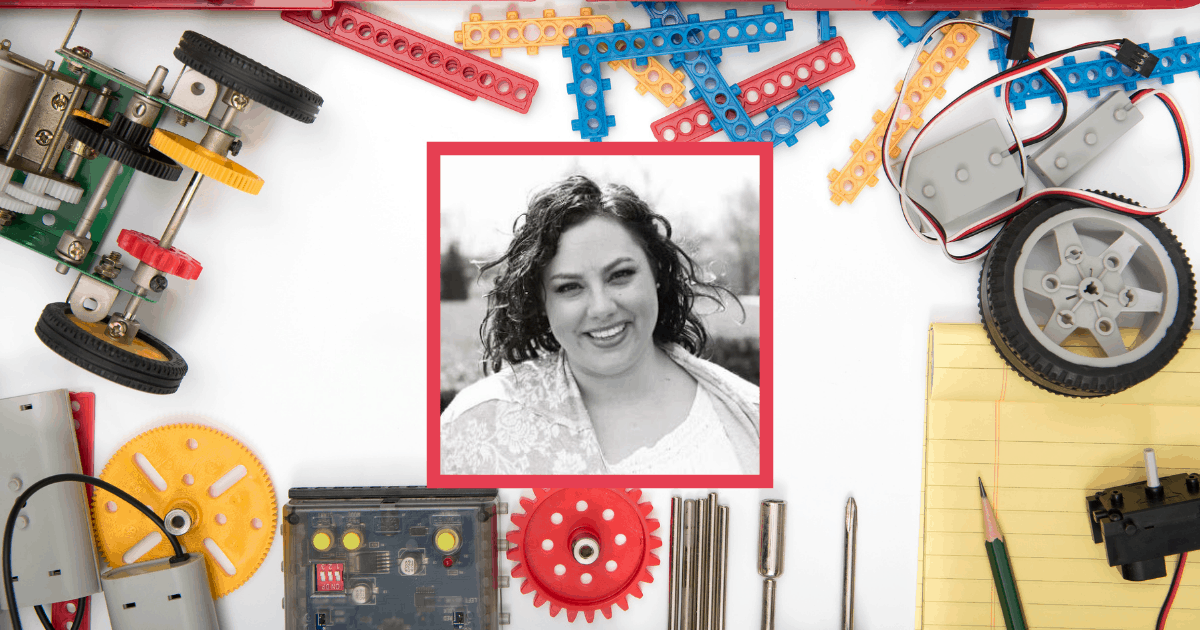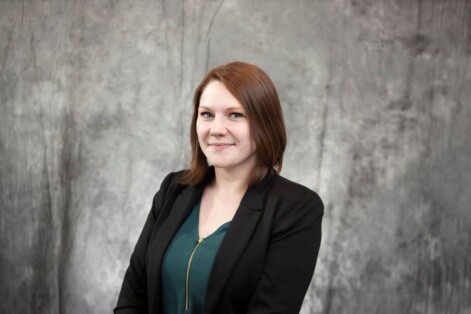“If you don’t give up and you allow students to go through the growing pains of the learning process, they will leave you in absolute awe at how much they can achieve.”
Natalie Faulkner was inspired by her own struggles as a student to become a teacher. While studying environmental science at Indiana University (IU Bloomington), Natalie was introduced to the rewarding pieces of coaching and developing students into their best selves through a “Culture of College” course she taught. She worked in sales immediately after graduation, but she soon decided to take a leap of faith and apply to Teach for America, a non-profit organization that inserts college graduates into communities that have a high need for teachers. This experience “began [her] journey on coaching and mentoring youths to discover their inner genius.” Natalie’s first position was as a high school biology teacher in Houston Independent School Disctrict (ISD). She also had the opportunity to teach middle school science in Dallas ISD during her time in Teach for America. She is now in her eighth year of teaching and teaches science at Lowell Middle School in Indiana.

Throughout her teaching experience, Natalie has become known as the go-to teacher for sponsoring after-school clubs and programs. She currently sponsors the science and math teams for the Academic Super Bowl, the Spell Bowl, and the school newspaper. In her early years of teaching, Natalie realized the need students have to grow outside of the classroom when three students approached her to ask if they could form a programming and robotics club. With limited resources, Natalie and her students began to familiarize themselves with programming simple robots to complete basic tasks. This led Natalie to an offer to develop a programming and robotics curriculum for the following year. Although she was hesitant because of her limited experience with robotics, Natalie was committed to doing what was best for her students. She dedicated her summer to developing two new curriculums and learning different programming software and robotics hardware that she could introduce to her students the following fall. She continues to carry this experience with her as she works to introduce students to the world of STEM outside of the context of their required math and science courses.
A Holistic Approach to STEM Education
Natalie values teaching engineering concepts in her classroom as a way for students to practice working through the design process repeatedly to build endurance and problem-solving skills that will benefit them in any line of work they pursue. She strongly believes that the process of iterating to incorporate revisions and feedback into their work helps students grow in all areas of social, emotional, and academic development. As she recognizes the importance of teaching engineering design concepts, Natalie also sees a need to transform the education system to embrace the interconnectedness of all the concepts taught in school. “Forget that math is the language by which we prove our scientific theories, and that without the ability to read and write in any field our brilliant thoughts would be confined to our brains, or that social studies teaches us how to look back at the change in humankind’s understanding of the world around us as we have developed and evolved, and that science is the study of the world around us…These are not concepts functioning in silos all their own.” By recognizing the synergies between all subjects and by teaching students to recognize these synergies as well, Natalie believes educators can better grow future leaders with versatile skillsets who are prepared to address more diverse challenges in life and in their careers.
To incorporate this holistic approach to STEM learning in her curriculum, almost all of Natalie’s projects for her students involve building. In her unit on engineering skills and the design process, students build a spacecraft prototype for a journey to Mars. Before students may begin building, they must make five iterations of their blueprint plans, present them to peers for feedback, and incorporate revisions each time. “Students get frustrated at first; they are ready to build. But forcing them to slow down and look at all angles of the challenge before building allows them to come up with a better prototype in the end.” During projects like these, Natalie also devotes time for students to reflect on what lessons from the project can be applied in other classes, in friendships, at home, or with any problem students may encounter in the future.
Transforming Methods to Measure Student Growth

Natalie describes herself as a “student-centric” teacher. This not only applies to her hands-on approach to learning, but also to her untraditional testing philosophy. Drawing on her own frustrations with testing as a young student, Natalie has eliminated traditional methods of testing (ie. multiple choice exams) from her classroom. She recognizes that many variables go into how a student performs on a multiple choice assessment from a student being tired or hungry or a student cheating or guessing, so Natalie seeks to implement more genuine determinants of a student’s understanding. At the beginning of each project, Natalie provides her students with a list of questions that they will learn throughout the course of the project. At the end of the project, she assigns students a final reflection that they work on independently. As they are working, she calls each student up to her desk individually and asks them a randomly chosen question from the list. As the student works at answering the question, Natalie opens a conversation that allows her to ask follow up questions specific to the way they answered to get a true idea of their understanding. All of Natalie’s methods of assessment involve dynamic conversations through which students can further explain their opinions and understanding with concrete evidence.
Natalie reflects that this method of measuring understanding encourages students to take more ownership of their learning. For example, if a student disagrees with their assigned score, then they can argue their claim during lunch or homeroom time. If they can prove that they have a greater qualitative understanding of the material than is represented by their quantitative score, Natalie will adjust the score to match. Natalie never underestimates her students’ abilities and gives many classroom responsibilities to her students – they take attendance and lead Socratic seminars. Natalie shares that her students are hesitant to speak up and take initiative at the beginning of the year, but, by the end of the year, students independently facilitate conversations by responding to each other, being aware of who hasn’t participated yet, and encouraging those students to speak up. “If you don’t give up and you allow your students to go through the growing pains of the learning process, they will leave you in absolute awe at how much they can achieve.”
Words of Advice
For teachers looking to adopt creative practices for STEM education, Natalie is eager to share the advice she has gained throughout her experiences in the classroom.
- Try and try again. “Oftentimes the first time is messy and there are hiccups along the way. [If attempting to implement a new activity], I would encourage hesitant teachers to ask someone they trust to come in and be an observer…to help the teacher flesh out his or her thoughts and reflections as to how the activity went, what went well, and what didn’t. The more reflective you are as a teacher, the better off you will be in your ability to grow and learn. And when you adhere to these reflective practices, your students can pick up on that.”
- Apply the scientific method when trying new teaching techniques. Natalie recommends forming a hypothesis, conducting an experiment, and doing your research to form a conclusion as to whether the new technique will be successful. For example, if you plan to try an open-ended approach to testing, “have one class that you only test by multiple-choice or whatever traditional means of testing you have historically used. Then choose another class to assess differently using a one-on-one questioning method. Try this for one grading period and compare the quantitative data that you have collected.”
- Use limited resources to your advantage. There is a misconception that STEM activities require expensive materials, but it doesn’t have to be this way. Natalie encourages students to use items that they already have around the house or recycled materials in their projects, which often inspires creativity in the students. She never recommends buying supplies on your own as a teacher, but instead asking parents for inexpensive supplies. In all of her years of teaching, even in low-income districts, Natalie has found that the community will always have a small subset who are willing to donate more than necessary, so a student who can’t donate doesn’t get put in the spotlight. Food (like cookies or pasta) can be incorporated into many activities as an inexpensive option that is very engaging for the students.
- Most importantly, Natalie encourages all educators to believe in their students’ abilities beyond quantitative test scores. “When students know that you believe that they are capable, they want to prove that they can do it.”
Author
-

SWE Blog provides up-to-date information and news about the Society and how our members are making a difference every day. You’ll find stories about SWE members, engineering, technology, and other STEM-related topics.






